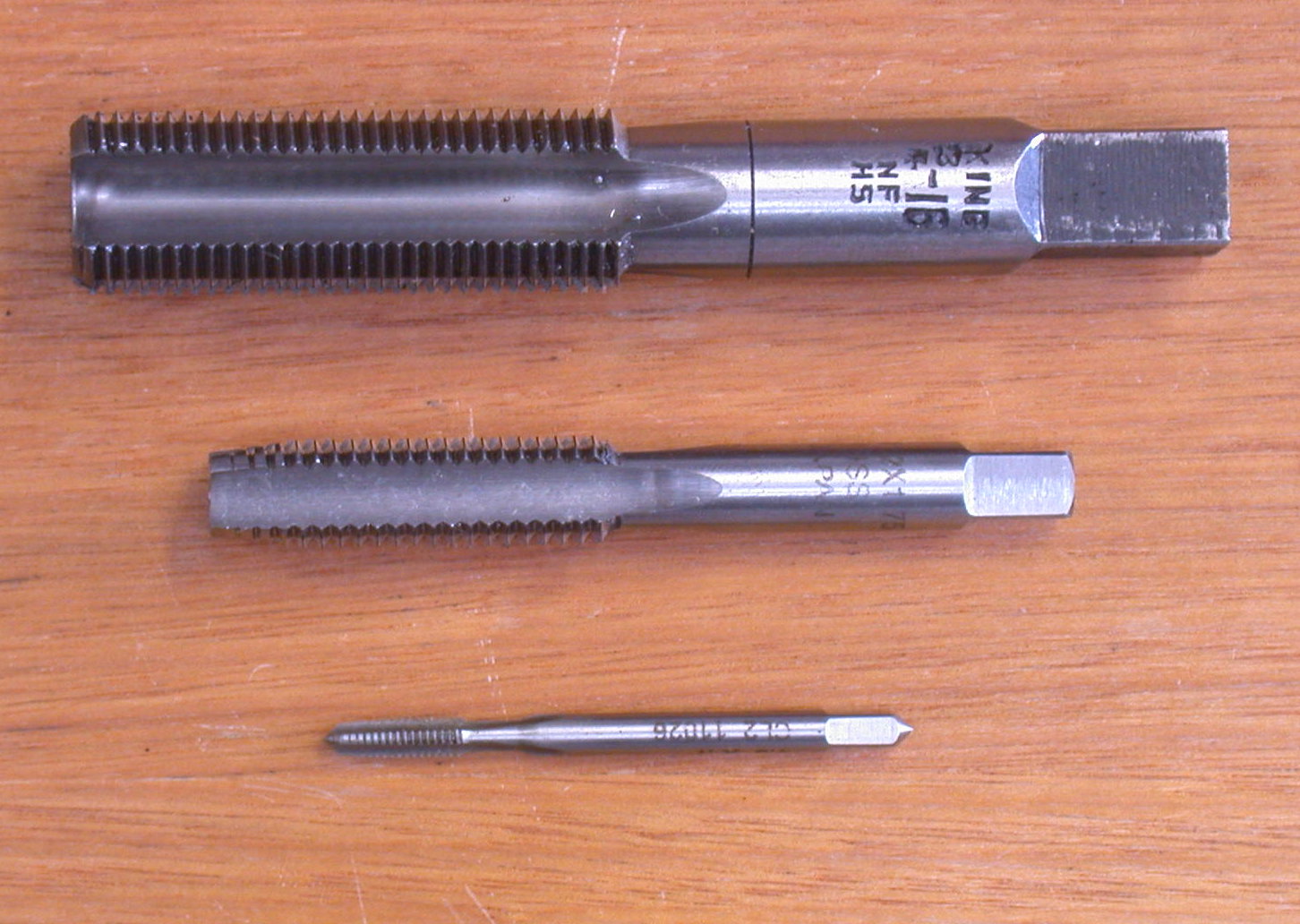Taps and dies are tools used to create screw threads, which is called threading. A machine screw tap is used for smaller bores that are open on the end. The smooth part above the body on which threads are cut, is called the shank. Let's cut to the chase: Four of the most common formats you’ll find are taper taps, plug taps, machine screw taps, and bottoming taps.
Let's cut to the chase: Taps are used to make internal threads in a hole, creating a threaded surface that allows a bolt to be screwed and fastened into it. It is round and the pitch of threads which are to be cut by shank is indicated on it. Basically, taps are used to cut nuts and dies are used to cut bolts. Spiral pointed taps have straight flutes that provide efficient coolant distribution.
In order to start your project, you need to figure out how many threads there will be on the part you are working with. Taps are used to make internal threads in a hole, creating a threaded surface that allows a bolt to be screwed and fastened into it. Both threading and tapping produce screw threads. Let's cut to the chase: Only 1 to 1.5 threads will be tapered.
A die is used to cut or form the male portion of the mating pair (e.g. The smooth part above the body on which threads are cut, is called the shank. Taps and dies are tools used to create screw threads, which is called threading. It is round and the pitch of threads which are to be cut by shank is indicated on it. Both threading and tapping produce screw threads.
Only 1 to 1.5 threads will be tapered. Basically, a taper tap is commonly used in bore with a closed end (with a recess). It is the main part of the tap on which threads are cut. A die, on the other hand, is a tool used to cut the male portions.
Four Of The Most Common Formats You’ll Find Are Taper Taps, Plug Taps, Machine Screw Taps, And Bottoming Taps.
529k views 4 years ago. A tap is used to cut or form the female portion of the mating pair (e.g. Taps are also used to cut threads into a hole so that they will receive a bolt more effectively. Bottoming taps are useful for threading blind holes.
Taper Taps Are The Most Common Types Of Taps And Are Typically What You’ll Have In A Tap And Die Set.
A plug tap is used where the bore is threaded, but not all the way to the bottom. The part above the shank is called the tang. It is round and the pitch of threads which are to be cut by shank is indicated on it. Which type you use depends on what type of hole you want to thread, blind hole or through hole, and the component material.
The Smooth Part Above The Body On Which Threads Are Cut, Is Called The Shank.
Basically, taps are used to cut nuts and dies are used to cut bolts. Straight flute tap, spiral point tap, spiral fuse tap, and forming tap. A die is used to cut or form the male portion of the mating pair (e.g. Only 1 to 1.5 threads will be tapered.
A Die, On The Other Hand, Is A Tool Used To Cut The Male Portions.
Basically, a taper tap is commonly used in bore with a closed end (with a recess). A hand tap is a tool used to manually carve an internal thread into a piece of material ready for a screw or bolt to be inserted in. Taps are used to make internal threads in a hole, creating a threaded surface that allows a bolt to be screwed and fastened into it. Taps and dies are tools used to create screw threads, which is called threading.
How to use a tap and die set. Taps are used to make internal threads in a hole, creating a threaded surface that allows a bolt to be screwed and fastened into it. Both threading and tapping produce screw threads. The smooth part above the body on which threads are cut, is called the shank. Straight flute tap, spiral point tap, spiral fuse tap, and forming tap.










Ads